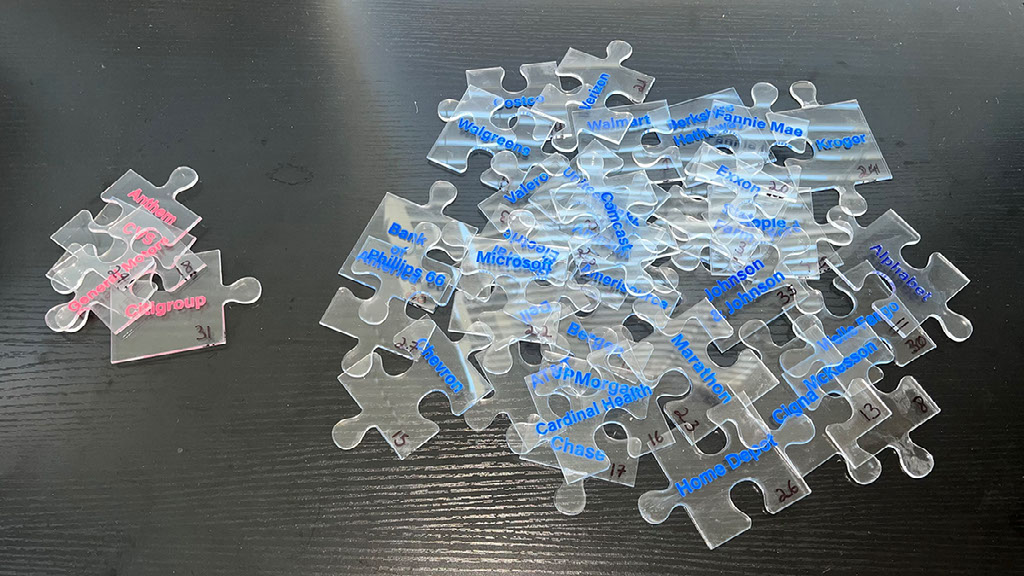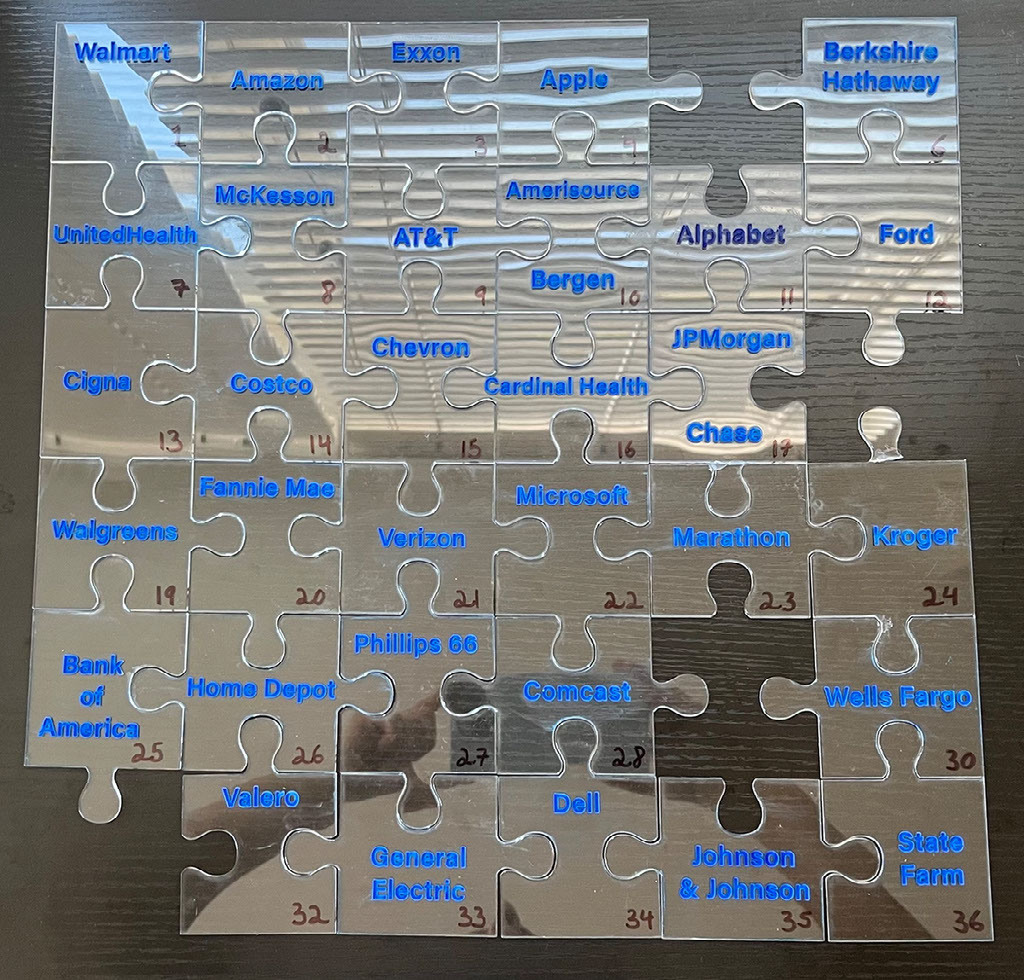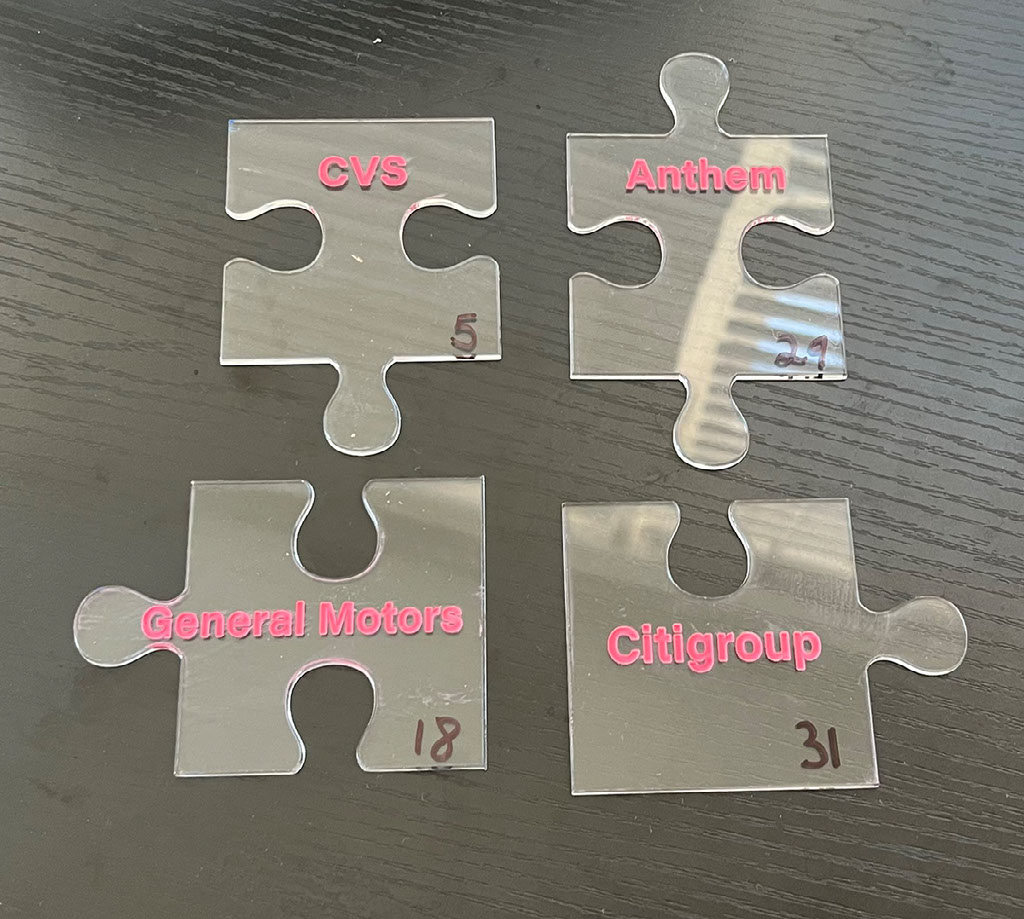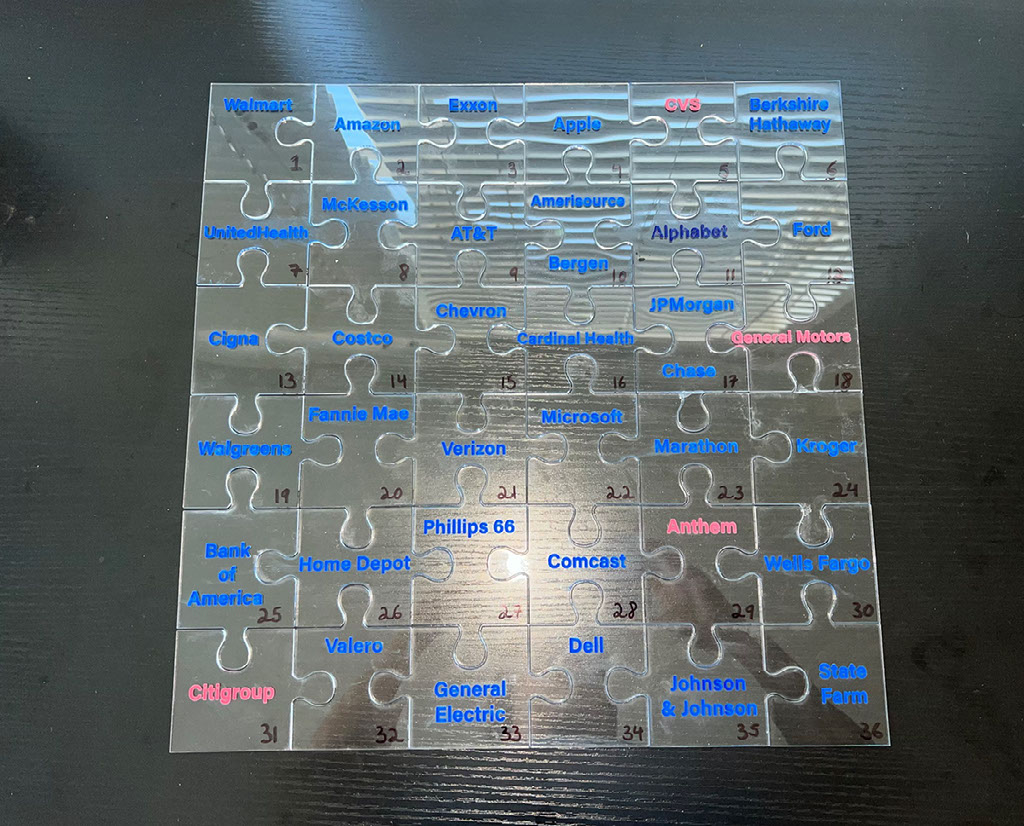Glass Ceiling Puzzle the underrepresentation of women and non-binary individuals in the technology industry
Ideation & Development
I began the process of ideating on how I might represent my dataset with an 8-minute design thinking exercise where I doodled 8 ideas in 8 minutes. I thought about my ideas in terms of what I was capable of building and what tools I would have at my disposal. How might I use a 3D printer to visualize how women and non-binary people are underrepresented in the technology industry? What about a laser cutter?
The idea that I liked the most from this exercise came in the form of a laser-cut puzzle. I wanted to show that the contributions of women, men, and those who identify as non-binary are all equally important in the technology industry. Gender is not an indication of work quality, and yet women and nonbinary people are severely underrepresented in the industry despite being capable of the same responsibilities. I thought that a puzzle would best represent this because as the participant is piecing it together, they would understand that every piece is equally needed to complete the full picture and yet a majority of the pieces are painted blue to represent men’s role in the industry. My puzzle was based on this data set that lists the gender identity of CEOS in Fortune 500's 2021 list.
I wanted the material that my puzzle was created out of to be meaningful to the message I was trying to convey, so I chose acrylic because it is a clear medium. It is meant to symbolize the “glass ceiling”, or barrier to professional advancement that many women and non-binary people face. For this reason, I also wanted the color of the puzzle pieces to be of the current CEO of each Fortune 500 company represented. Green for non-binary, pink for women, and blue for men. Once the participant completes the puzzle, they will realize that 4 of the 36 companies have a female CEO, and none of them have a non-binary CEO.
I designed a puzzle in Adobe Illustrator, laser cut my acrylic into the correct shapes, and etched in the names of the top 36 Fortune 500 companies that I later painted the color of the company’s current CEO. The puzzle is meant to be put in order of the company’s annual revenues ranking in 2021, which also shows the wage gap as only 4 of the top 10 companies are led by women.
Political & Ethical Considerations
There are a variety of factors that contribute to women and non-binary individuals being underrepresented in the technology industry. One explanation is the lack of role models in the technology industry who aren’t men, which perpetuates the cycle. It’s difficult to imagine yourself in a position or being capable of certain skills if there aren’t many people like you to look up to or seek out guidance from.
This is a similar rationale for why there is a lack of women pursuing degrees in STEM fields. Many STEM fields such as computer science have a reputation for being male-dominated, which deters many women from entering into the field. TrustRadius reports that 72% of women in tech report being outnumbered by men in business meetings, and there was not a large enough sample size of non-binary survey respondents to report on their sentiments.
Marginalization & Social Justice
Technology is a traditionally male-dominated field with few women making it to higher positions. That bias has continued into the modern day, represented by the wage gap. Pew Research Center claims that 50% of women in STEM careers said they had experienced gender discrimination at work, and that number jumps to 62% for women with post-graduate degrees.
In the past 20 years, the concept of gender has greatly evolved as the world becomes increasingly accepting of those who don’t identify with the gender binary. But there is still much more acceptance and understanding that needs to be done. Non-binary individuals have a much harder time getting through recruiting at technology companies. According to Gay Times, two-thirds of transgender and non-binary employees hide their identities at work out of fear of discrimination.
Those who identify as non-binary are often left out of the conversation about the gender pay gap, which I also wanted to show with my project. As the participant is putting the puzzle together, they will realize that none of the CEOs of the top 36 Fortune 500 companies identify as non-binary. Women in 2022 still earn 17% less than men on average, and the Human Rights Campaign says that non-binary workers make 70 cents for every dollar the typical worker earns. By listing the top 36 Fortune 500 companies by annual revenues in 2021, my puzzle reflects disparities in the wage gap as well as disparities in gender representation.
Courses of Action & Implications
Encouraging younger generations to pursue careers in STEM is one possible way to close the gap. According to PWC, by 2026, there are estimated to be 1.2 million computer science jobs unfulfilled in the U.S., but only 3% of female students would consider a career in technology as their first choice. Providing education in technology early and encouraging female and non-binary participation in technology courses would help to create a positive environment in that industry.
By having more women and non-binary individuals in the technology industry, it may feel exclusionary to them at first with them being so outnumbered currently, but gradually as more of them make their way into the field those statistics won’t be as stark. We should encourage women and non-binary individuals to be open to career paths that are typically male-dominated, but not make them feel like they have to go into these paths. At the end of the day, everyone should go into a career path that they feel comfortable with. Creating more inclusive environments would lead to women and non-binary individuals having more influence on each company and its culture and being able to better represent their demographic’s needs as a consumer.



